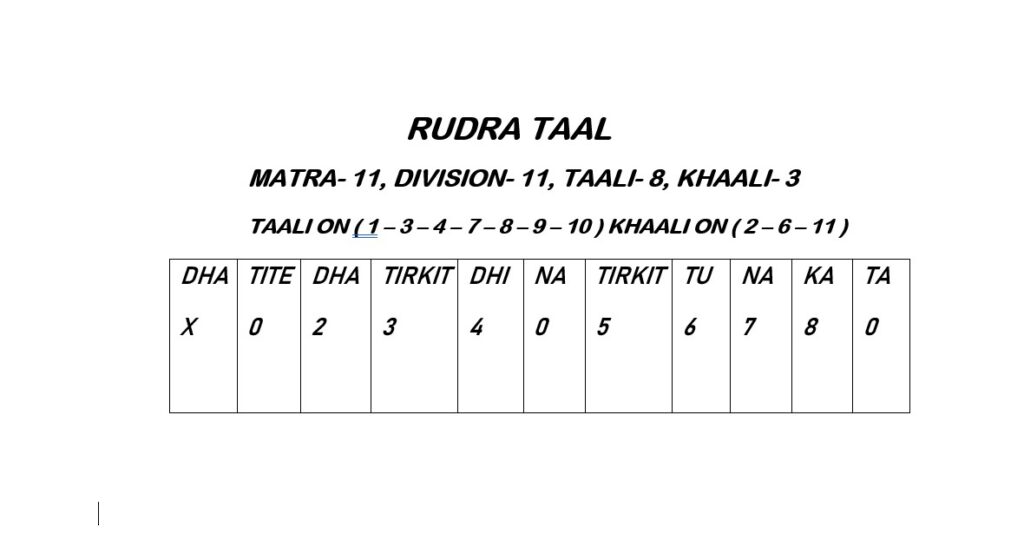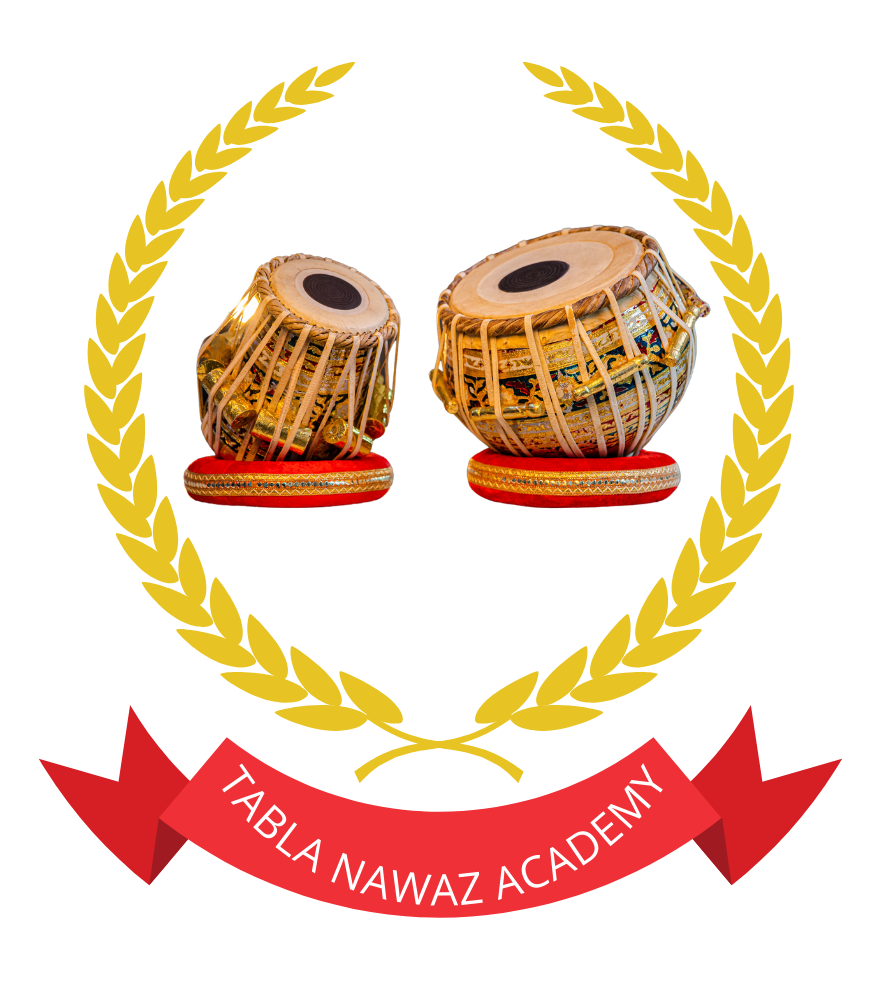Rudra Taal: A Rhythmic Journey into Power and Precision
The Rudra Taal is a powerful and intricate rhythmic cycle used in Indian classical music, typically associated with devotional or meditative compositions. Its name, “Rudra,” translates to “fierce” or “mighty,” often connected with Lord Shiva, evoking energy, discipline, and an aura of spirituality.
This blog explores the depths of Rudra Taal, from its unique theka (rhythmic pattern) to its cultural and musical significance.
What is Rudra Taal?
Rudra Taal is a 11-beat rhythmic cycle commonly found in Hindustani classical music. This taal is not as widely known or used as others like Teentaal (16 beats) or Ektaal (12 beats), but it holds a special place in certain classical performances, especially in compositions meant to convey grandeur and intensity.
The 11 beats are divided into four segments:
4 + 2 + 3 + 2
The Theka of Rudra Taal
The theka is the basic rhythmic structure played on the tabla to outline the taal. Here is the standard theka for Rudra Taal:

- Bold beats (e.g., Dha, Dhin) are played on the Bayan (bass drum) to emphasize the strength of the taal.
- Softer syllables (e.g., Na, Tin) bring balance and create intricate patterns.
Let’s break this down into its divisions:
- Dha Dhin Dhin Dha – A strong, energetic opening.
- Dha Ti – A short yet distinct interval.
- Na Tin Tin Na – A melodic and flowing segment.
- Dhi Ti – A crisp ending to complete the cycle.
Learning to Play Rudra Taal
If you’re new to tabla, Rudra Taal might feel challenging due to its odd 11-beat structure. Here’s how you can practice:
- Start Slow: Focus on each segment separately.
- Use a Metronome: Set it to a slow tempo (e.g., 60 BPM) and count the beats aloud.
- Combine Segments: Gradually link the phrases while maintaining clarity.
You can also refer to tutorial videos to get a feel for the taal’s flow.
Famous Performances in Rudra Taal
Though less mainstream than taals like Teentaal, Rudra Taal has been showcased by legendary artists in dhrupad, Haveli Sangeet, and even fusion music.
- Pandit Kumar Bose – Renowned tabla virtuoso, Kumar Bose, has performed intricate compositions in Rudra Taal, blending speed and clarity.
- Dagar Brothers – Masters of the Dhrupad style, they have used Rudra Taal to evoke profound spiritual themes.
- Ustad Zakir Hussain – In experimental performances, Zakir Hussain has touched upon complex taals, including Rudra, showing its adaptability in modern contexts.
Interactive Element: Practice with Audio
To get a feel for the rhythm, try playing along with this Rudra Taal practice clip. [Embed an audio clip of Rudra Taal here]
Cultural and Musical Significance
Rudra Taal isn’t just a rhythmic cycle—it’s a representation of Shiva’s energy in music. Its odd beats reflect the unpredictability of nature while maintaining harmony, making it a favorite in meditative and spiritual contexts.
This taal is also a reminder of the tabla’s versatility in expressing both power and precision.
Quiz: Test Your Taal Knowledge!
- How many beats does Rudra Taal have?
a) 10
b) 11
c) 12 - Which rhythmic phrase marks the beginning of Rudra Taal’s theka?
a) Dha Ti
b) Dha Dhin Dhin Dha
c) Na Tin Tin Na - Rudra Taal is often associated with which deity?
a) Krishna
b) Shiva
c) Saraswati
Conclusion
Rudra Taal may not be the most popular rhythm in tabla repertoire, but it carries immense depth and character. Its unique structure challenges the performer to maintain both energy and precision, making it a rewarding experience for both the musician and the listener.
Whether you’re a tabla enthusiast or a lover of Indian classical music, exploring Rudra Taal is a step into the profound artistry of rhythm. Ready to dive deeper? Start practicing this mighty taal today!
https://www.youtube.com/@BhagawanSingh

